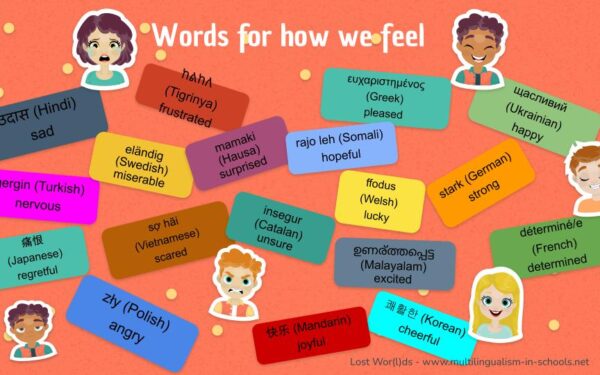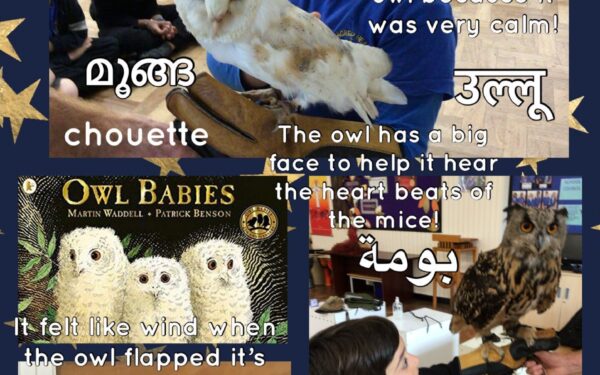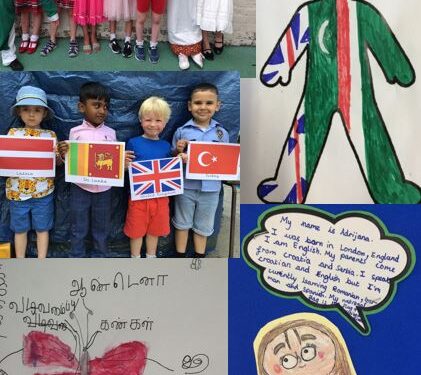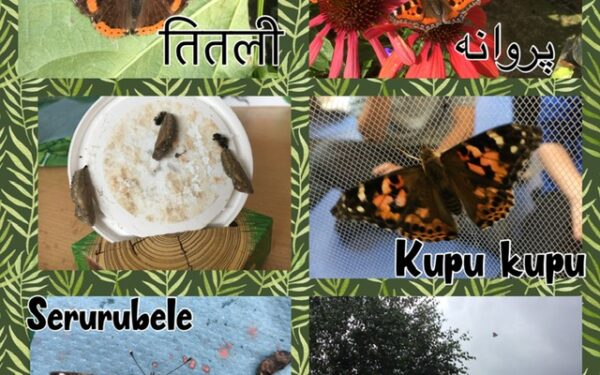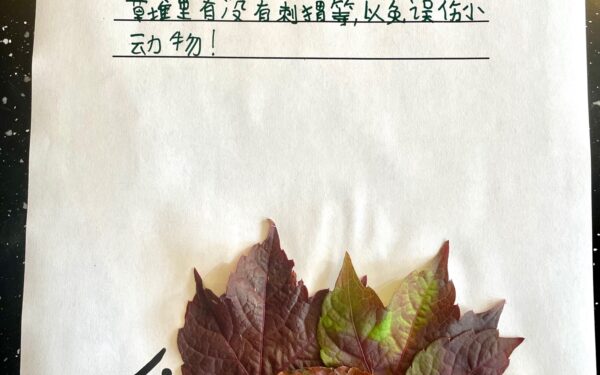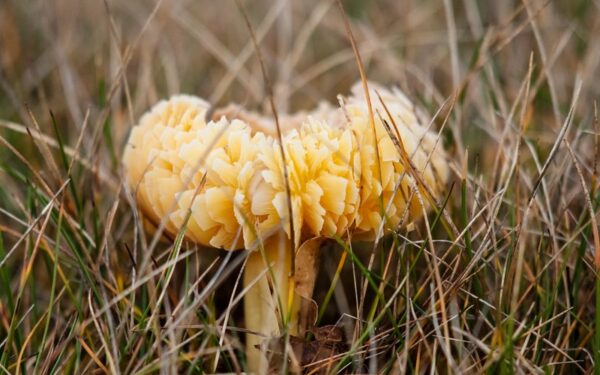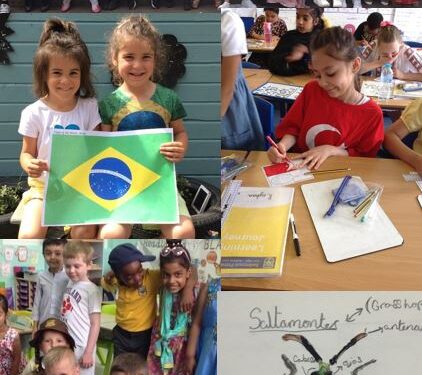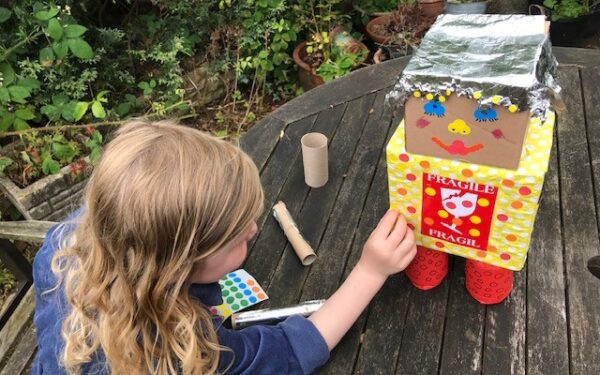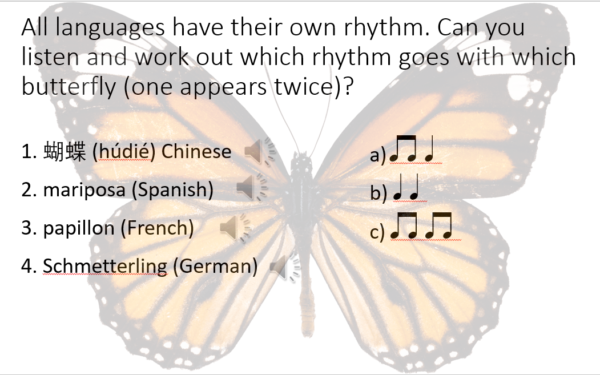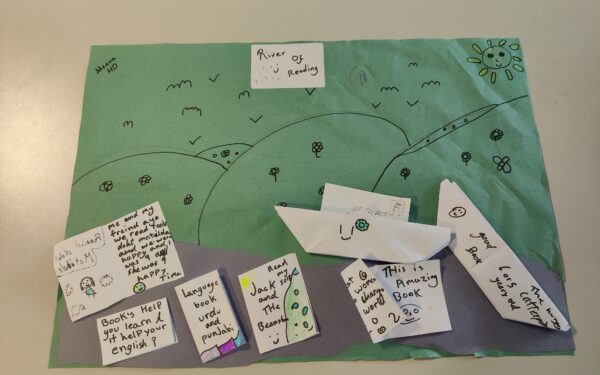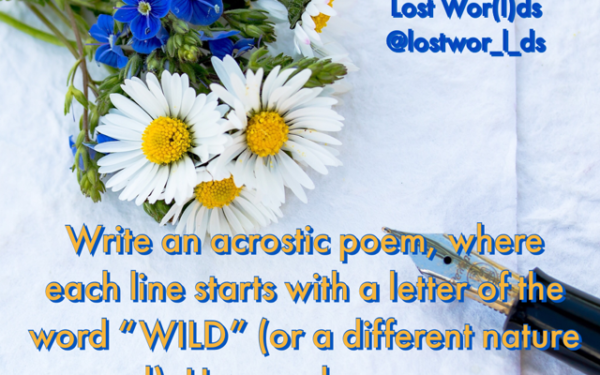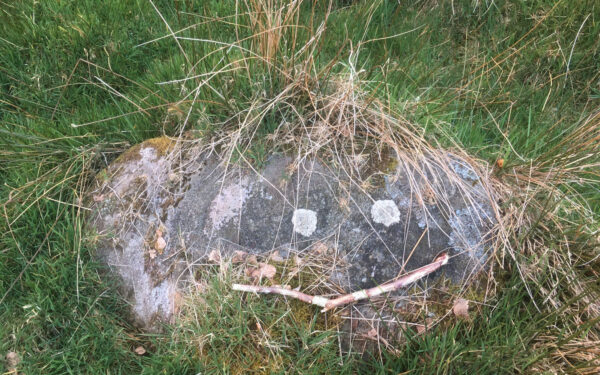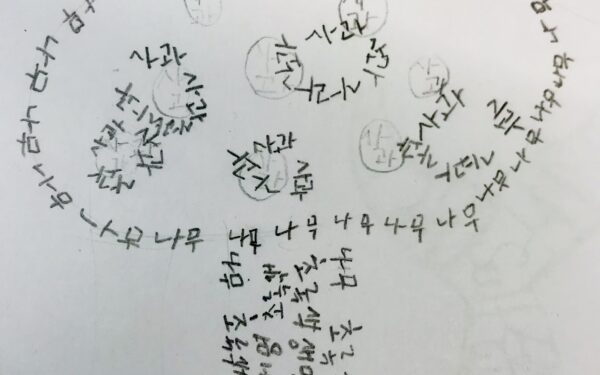It’s Empathy Day on 6th June – a great opportunity to use multilingualism in the classroom as a way to encourage interest in, and engagement with, each others’ languages. Here are four simple ideas.
Read MoreFeature School: Sacred Heart School, Leeds
When the wonderful Miss Morrisroe shared with us that her Year 1 class was planning on using our Minibeast Speech Song activity and adapt it to an “Owl Rap”, we asked whether we could come and film them, and were very grateful when this was possible. Ryan Bramley, a lecturer in the School of Education […]
Read MoreMultilingual storytelling or shared reading
Every time we share a story with children, we have a fantastic opportunity to enable children to build on their language awareness, learn from each other, and enhance their linguistic repertoire. Check out this activity to gain some confidence in enhancing children’s linguistic repertoire through storytelling.
Read MoreMultilingual Me
This activity is designed to celebrate a child’s achievements in language learning and allows pupils to explore different aspects of their language abilities. It is a way to record a pupil’s language competencies in speaking, writing and reading other languages as well as their aspirations for learning other languages. It would work well as part […]
Read MoreA year (or thereabouts) in the life of Lost Wor(l)ds
Well, what a year we have had! We have been taking stock after the website’s first year of operation and collating the feedback we have received, so we wanted to share with you some of our insights. From the site launch in January 2021 to the end of February 2022, there were over 2,800 downloads […]
Read MoreTeachers’ strategies for teaching multilingual pupils – Andrea Morrisroe
This summer I undertook a dissertation as part of a Master’s in Education, specialising in Early Childhood Education. As an Early Years class teacher in primary education for many years, I have always had an interest in language acquisition. This interest developed further as increasing numbers of children were starting school with little or no English. Over time my school developed a policy towards EAL which ensured that effective strategies for supporting pupils with EAL were embedded and the use of home language was encouraged and celebrated.
Read MoreLost Wor(l)ds and COP26
From October 31st to November 12th, the 26th United Nations Climate Change Conference is taking place in Glasgow. To celebrate COP26, we have put together a “Calendar of Events”: for each day of COP26, we are focusing on one specific activity. Some are aimed simply at valuing and appreciating nature, while others are more directly linked to activism and driving change at local level.
Read MoreLeafy hedgehogs
For COP26, we put together a calendar of activity ideas, including the creation of leafy hedgehogs. Here, we offer for downloading a simple leafy hedgehog template with space for children to write the word ‘hedgehog’ in another language, and well as three different templates to encourage people to check their bonfires for hedgehogs, this helping and protecting our spiky friends. Each poster has space to include the message in a language other than English, and we would love to see your results!
Read MoreAutumn Scavenger Hunt
Our multilingual scavenger hunts have been one of the most favourite activities, and this autumn version completes the set. With lots of opportunities to explore the outdoors, this is the perfect activity to get children to use all their languages to explore nature around them.
Read More100 Feathers and multilingual stories – Minshan Zhang
I wanted to research what happened when a space was provided to the students for their use of home language or other language resources that they have, in particular, I am interested in the language use in story writing activity. In order to explore the affordances of multilingual story writing activity, I came up with two research questions: what themes do children identify in their stories? To what extent do students apply their full linguistic repertoire in the multilingual story writing activity? To address those questions, stories written by pupils at primary schools in Sheffield were collected and analysed.
Read MoreSellincourt Primary “Feature School”
Sellincourt Primary School is located in London and its student population reflects the incredible diversity without our capital city. We know that acknowledging and incorporating pupils’ home languages into their formal learning has positive effects not just on language development and learning in general, but also on important aspects of well-being such as integration and belonging. We were delighted to see how Sellincourt Primary utilised Lost Wor(l)ds activities to celebrate the diversity amongst their pupils. The X form entry school dedicated an entire day in June, to celebrating the connection between language, cultural identity and nature with ‘International Languages Day’.
Read MoreRubbish Robots
We have worked with the MakerFutures project to create an activity for children to design and build a robot from recycled materials. Children will identify a role and produce a profile for their robot, which explains how they help the environment, using different languages.
Read More(Minibeast) Speech Song
A perfect activity for music lessons, planning performances, showcasing multilingual talent. While the resources are based on minibeasts, once children have grasped the concept, any topic can be used. Children bring in their home languages to explore the rhythm of language – would you clap “grasshopper” different from “butterfly”? How do long and short syllables […]
Read MoreGladstone Primary ‘Feature’ School
‘Rivers of Reading’ aims to explore children’s reading of books, magazines and words in whatever form they are produced and connect the places and people they learn and read with. The different places in which children read can include home, school, a place of worship or even round at a friend’s or neighbour’s house! The […]
Read More30 Days Wild Multilingual – stimulus activities
June 2021, ‘Lost Worl(l)ds’ participated in the Wildlife Trust’s #30DaysWild programme, through the development of our own version – #30DaysWildMultilingual. The aim of #30DaysWildMultilingual is to encourage children to get outdoors, observe and engage with the natural world BUT to make it multilingual by incorporating existing, or learning new language skills. #30DaysWildMultilingual can be undertaken […]
Read More100 Feathers
The “100 Feathers” activity is designed to encourage children to think about people’s stories, by writing a story themselves. We are hoping to collect 100 stories from children, for the 100 feathers flying through the world. This activity is part of Refugee Week and the Migration Matters Festival.
Read More30 Days Wild – Multilingual
Every year in June, The Wildlife Trusts run the 30 Days Wild challenge – a challenge to do an activity linked to nature, every day, for the whole month. When we recently met up with our local Wildlife Trust (Sheffield and Rotherham Wildlife Trust), we suggested the idea of putting together a multilingual version of 30 Days Wild, suitable both for children growing up multilingual, and for those learning another language at school.
Read MoreBerlin Metropolitan ‘Feature’ School
This week we welcome the Berlin Metropolitan School to the blog. We have no doubt you’ve already guessed . . . but this school is not based in the UK, instead it’s located in what is arguably Germany’s cultural capital – the city of Berlin. With a student population of 1000+ pupils hailing from 78 […]
Read MoreTranslating and Creating Poetry
This activity gives pupils an opportunity to think about the act of translation, focusing on language as well as meaning. They are supported through translating a 1,300 year-old poem by Li Bai, a famous Chinese poet. The poem, “Quiet Night Thoughts”, uses a simile and simple language to explore the feeling of loneliness when being away from home.
Read MoreBeat the Street
This week is the launch of ‘Beat the Street’ in Rotherham, a giant game played in real time in the roads, parks and green spaces surrounding throughout the town. Walk, run, cycle, scoot or skip between Beat Boxes, tap in and collect points, whilst exploring every nook and cranny of your local area. ‘Lost Wor(l)ds’ […]
Read More